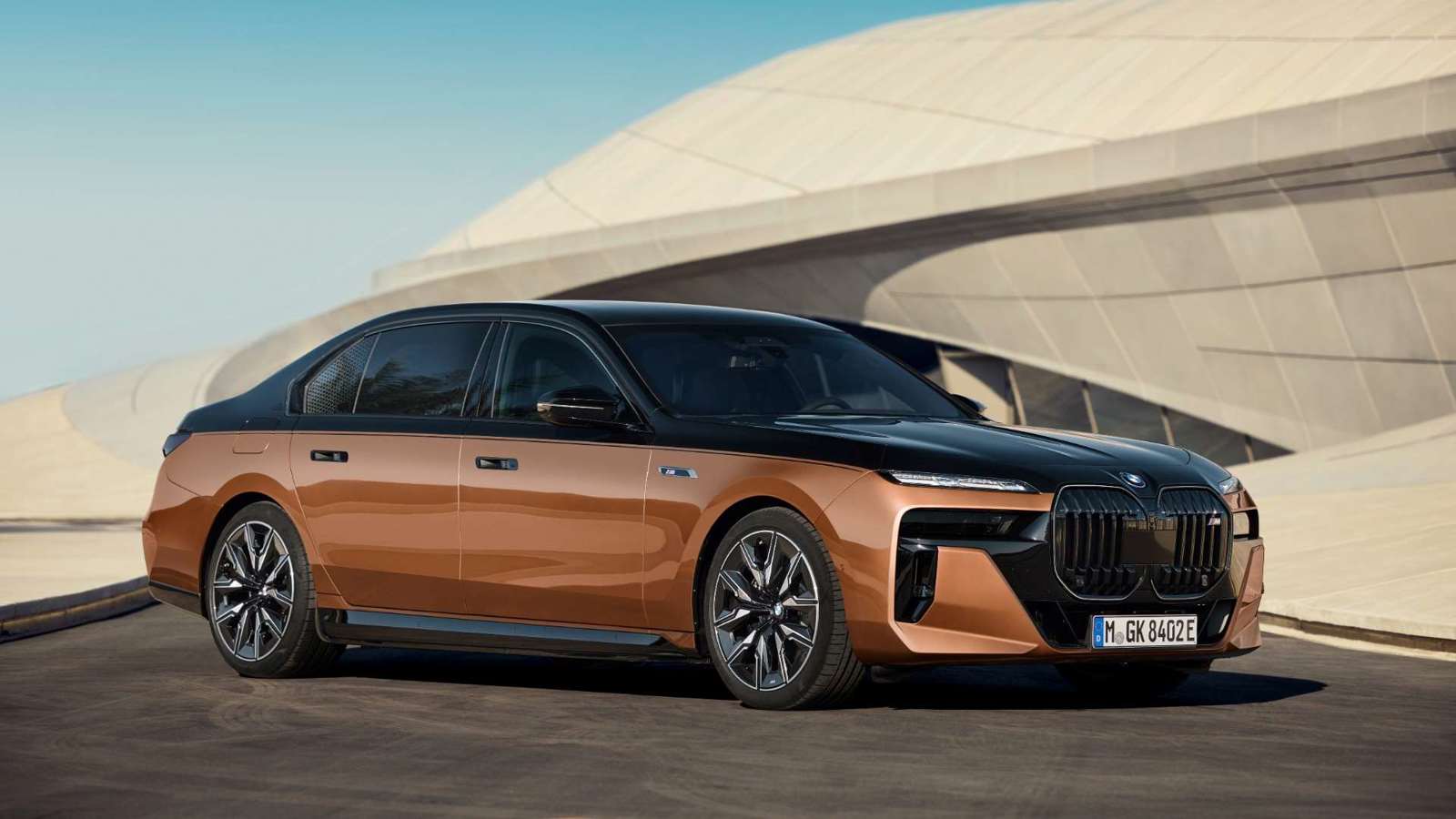When it comes to owning a car, many factors influence the overall cost of ownership, but one of the most critical yet often overlooked aspects is the insurance deductible. An insurance deductible is the amount a car owner agrees to pay out of pocket before their insurance coverage kicks in to cover repairs or damages resulting from accidents, theft, or other covered incidents.
Understanding how deductibles work and why they vary between different car models is essential for any prospective car buyer or policyholder seeking to manage their financial risks effectively.
The size of an insurance deductible is influenced by a range of factors that insurers meticulously analyze. These factors include the car’s repair costs, safety features, theft risk, and even the typical profile of its drivers.
Vehicles with advanced safety technology and lower repair costs often enjoy smaller deductibles because insurers perceive a reduced risk of expensive claims. Conversely, luxury cars, high-performance models, and vehicles with costly repairs tend to have much larger deductibles, reflecting the higher financial risk insurers bear.
Insurance deductibles can significantly impact the overall affordability of a vehicle. While premiums are the monthly or annual payments policyholders make, deductibles are the lump sums paid after an incident occurs. A lower deductible means less immediate financial burden when making a claim but may come with higher premiums.
Higher deductibles often reduce monthly premiums but can lead to substantial out-of-pocket expenses after an accident. Therefore, choosing a car with a favorable insurance deductible balance is a crucial decision for budget-conscious drivers.
In this comprehensive exploration, we delve into two contrasting groups of vehicles: those with the smallest insurance deductibles and those saddled with the largest. We analyze why certain models like the Honda CR-V and Toyota Camry tend to have low deductibles, highlighting their safety features, affordable repair costs, and typical driver behavior.
On the flip side, we examine luxury and performance vehicles such as the BMW 7 Series, Tesla Model S, and Mercedes-Benz S-Class, which carry hefty deductibles due to their complex technology, expensive repairs, and higher-risk driver profiles.
Beyond just listing these vehicles, this article seeks to provide insight into the underlying reasons insurance companies assign specific deductible amounts to particular cars.
This knowledge can empower consumers to make more informed decisions, balancing their desire for style, performance, or luxury against the practical considerations of insurance costs. By understanding the link between vehicle characteristics and insurance deductibles, drivers can anticipate potential expenses and avoid surprises after purchasing a vehicle.
Moreover, this discussion touches upon the broader trends in automotive insurance and how advances in technology, changing driver demographics, and vehicle design influence insurance costs.
As modern cars increasingly integrate autonomous driving features, complex electronics, and eco-friendly powertrains, insurers continuously adjust their risk assessments. This dynamic environment means that understanding deductible patterns is not only relevant today but will become increasingly important as automotive technology evolves.
Ultimately, whether you prioritize safety, affordability, or luxury, this article equips you with the necessary context to approach car buying and insurance planning with confidence. From compact SUVs with moderate repair costs to high-end sedans with sophisticated systems, the interplay between a vehicle’s attributes and its insurance deductible is intricate but crucial.
As you explore the detailed profiles of cars with the smallest and largest deductibles, consider how these factors align with your budget, driving habits, and risk tolerance.
By the end of this article, you will have a clearer picture of how insurance deductibles vary widely across the automotive spectrum and why. This understanding will help you navigate the complex landscape of auto insurance, ensuring you make choices that protect your finances while meeting your transportation needs.
Whether you are a first-time buyer, a seasoned driver upgrading to a new model, or simply curious about insurance dynamics, this deep dive into insurance deductibles promises valuable insights.
Also Read: 5 Sedans With Best Turning Radius And 5 With Widest
5 Cars with the Smallest Insurance Deductibles
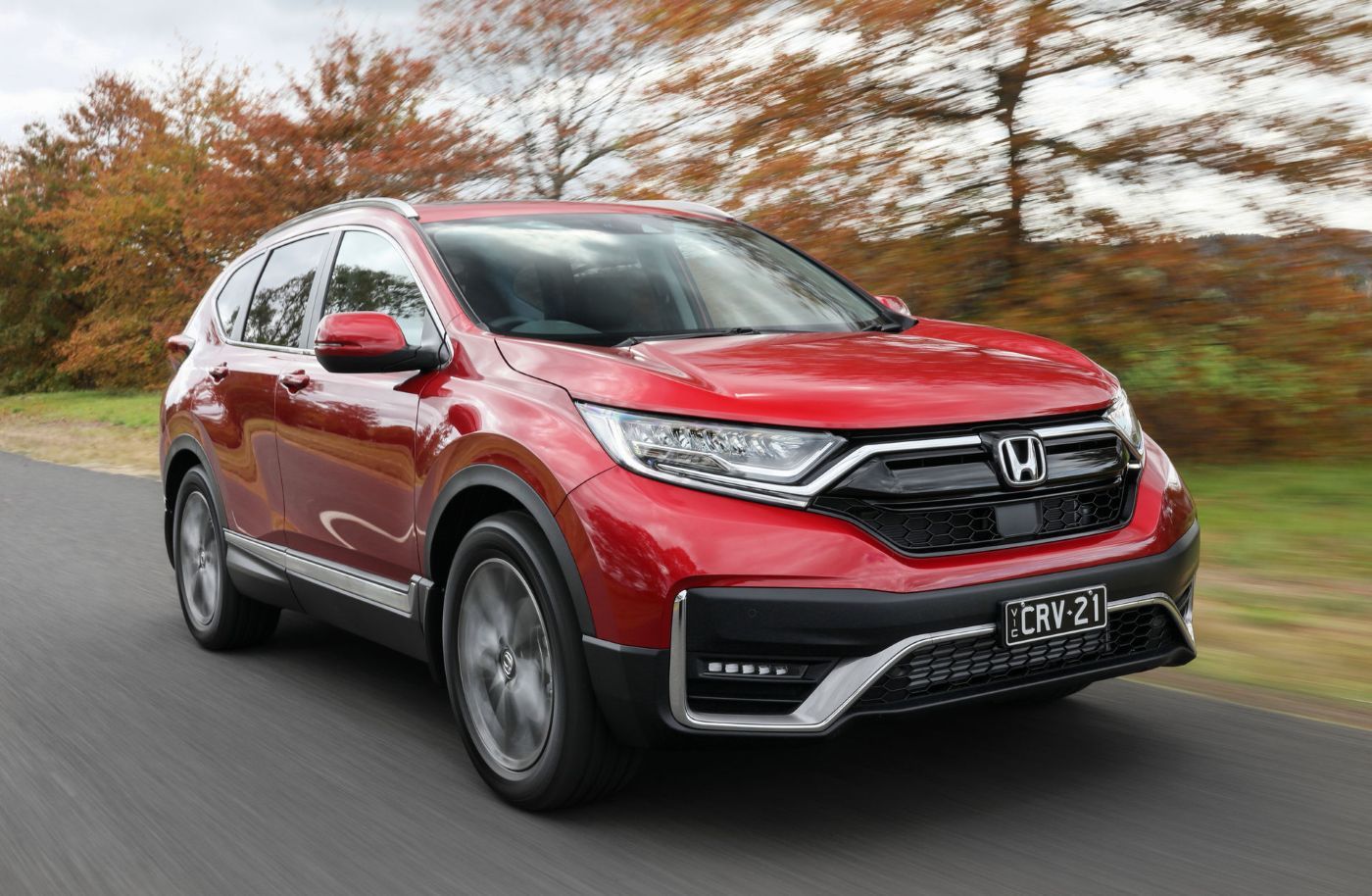
1. Honda CR-V
The Honda CR-V consistently ranks as one of the vehicles with the smallest insurance deductibles, and this reputation stems from a combination of factors rooted in the car’s overall design philosophy, safety features, and market positioning. The CR-V is widely regarded as a reliable, practical compact SUV that appeals to a broad spectrum of drivers, from young professionals to families seeking a safe daily driver.
Its appeal is partly due to its excellent crash test scores and a comprehensive suite of standard safety features that actively prevent accidents. These include collision mitigation braking, road departure mitigation, and adaptive cruise control.
Insurance companies place a premium on these technologies because they significantly reduce the frequency and severity of accidents, leading to fewer and less costly claims.
From an insurance perspective, the CR-V’s popularity among conservative drivers also plays a significant role in keeping deductibles low. The average CR-V driver tends to be a cautious, middle-aged individual or family who values safety and longevity over performance.
This demographic generally files fewer claims, which lowers the insurer’s risk exposure. Moreover, the widespread availability of replacement parts and the relatively straightforward repair processes for the CR-V contribute to lower repair costs.
Insurers calculate deductibles not only based on accident frequency but also the anticipated cost to repair or replace damaged components. Because the CR-V is mass-produced and shares parts with other Honda models, repairs can be done quickly and affordably.
Another element affecting the CR-V’s deductible is its theft rate, which remains relatively low compared to other SUVs. Insurance companies analyze theft statistics heavily because stolen vehicles or those damaged during theft attempts can lead to expensive claims.
Honda’s robust anti-theft technologies, combined with the vehicle’s overall less flashy appeal, make it a less common target for thieves. This further reduces the insurer’s potential payouts and thus supports smaller deductibles. The CR-V’s reputation for durability also means it tends to sustain less damage during minor collisions, as the structure absorbs impacts effectively, minimizing repair costs.
Lastly, Honda’s reputation for building vehicles that maintain value over time has an indirect but important effect on insurance deductibles. Vehicles that depreciate too quickly often lead to higher total loss claims, forcing insurers to increase deductibles to compensate.
The CR-V strikes a balance between affordability and retention of value, which insurers reward with more favorable deductible terms. This combination of safety, repairability, low theft risk, and driver profile makes the Honda CR-V a standout in terms of low insurance deductibles.
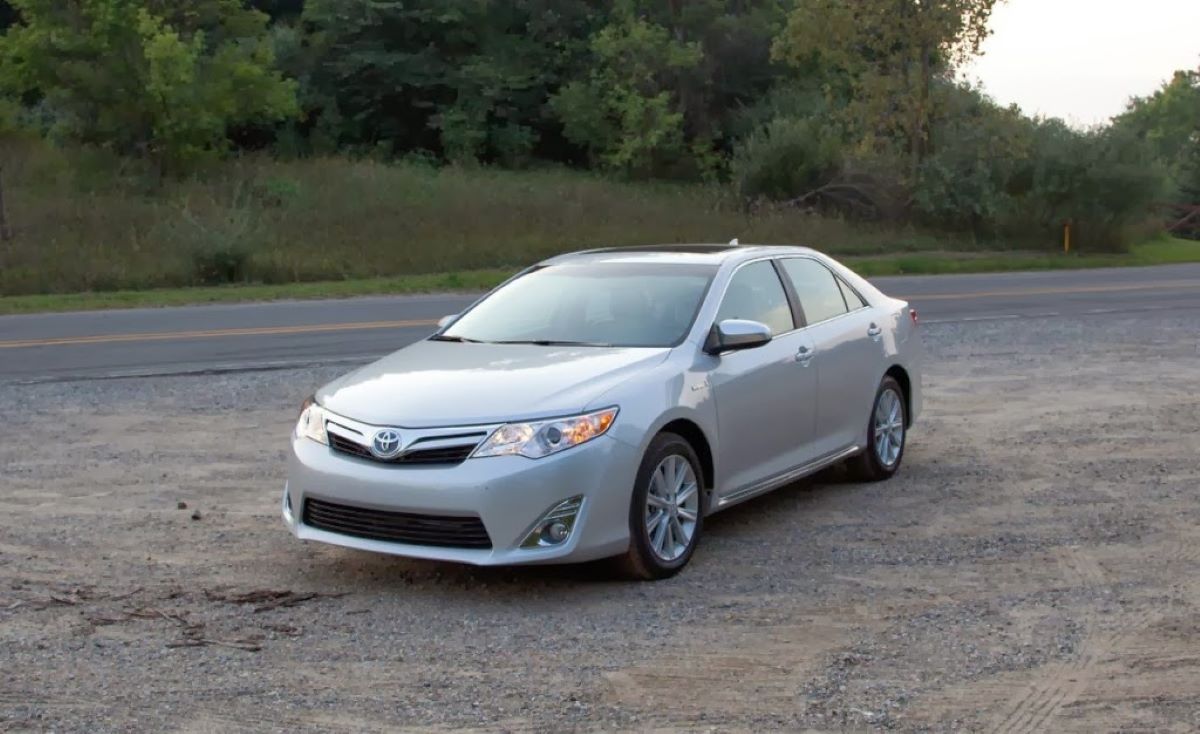
2. Toyota Camry
The Toyota Camry is an iconic midsize sedan that has long been praised for its reliability, fuel efficiency, and above-average safety ratings. These attributes are precisely what make it one of the cars with the smallest insurance deductibles.
The Camry is packed with standard and optional safety features, such as Toyota Safety Sense, which includes adaptive cruise control, lane departure alert, and automatic high beams.
These systems contribute to lowering accident rates by assisting drivers in avoiding collisions or reducing their severity. Insurance companies value this proactive approach to safety, and it plays a critical role in reducing deductibles.
Insurance companies also consider the Toyota Camry’s repair costs to be lower than many competitors. Unlike luxury sedans or sports cars, the Camry’s parts are widely available, and its engineering is designed with durability and ease of maintenance in mind.
Repairs tend to be straightforward and don’t usually require expensive replacement parts or specialist labor. The predictability of these repair costs means insurers have a clearer picture of their potential liabilities and feel comfortable offering smaller deductibles. The car’s mainstream appeal and high sales volume further drive parts availability and repair efficiency, lowering insurer risk.
The driver profile for the Toyota Camry is another important factor influencing deductibles. Camry drivers span all ages but tend to be pragmatic, safety-conscious individuals or families. These drivers generally exhibit fewer risky behaviors behind the wheel, leading to fewer claims and claims of lower severity.
Insurance companies analyze these patterns extensively and often offer better deductible terms to cars that attract this type of responsible driver base. This demographic stability contributes directly to the smaller deductibles associated with the Camry.
Lastly, the Camry has relatively low theft rates, especially when equipped with modern anti-theft systems like immobilizers and alarms. Lower theft risk reduces insurance exposure to costly theft-related claims, which is another factor enabling smaller deductibles.
Toyota’s solid reputation for quality and reliability also means the car maintains value well over time, further encouraging insurers to provide favorable deductible amounts. Overall, the Toyota Camry’s blend of affordability, safety, and widespread appeal ensures it remains a vehicle with some of the smallest insurance deductibles on the market.

3. Subaru Outback
The Subaru Outback occupies a unique niche as a rugged, outdoorsy vehicle that also enjoys some of the smallest insurance deductibles among SUVs. This reputation stems from Subaru’s strong focus on safety and durability combined with the Outback’s appeal to a careful and practical driver demographic.
One of the most compelling features influencing insurance costs is Subaru’s EyeSight technology suite, which includes adaptive cruise control, pre-collision braking, and lane departure warning. These systems are proven to reduce collision rates, making the Outback a safer vehicle and thus reducing insurance risk.
In addition to safety, the Outback benefits from solid crashworthiness. Insurance providers give significant weight to a vehicle’s performance in crash tests, and the Outback scores highly in this regard.
The vehicle’s robust construction often means that even when accidents occur, the damage and potential injury claims tend to be less severe. The combination of safety features and crashworthiness not only decreases the frequency of claims but also reduces the average claim cost, both of which drive insurance deductibles down.
Repair costs for the Subaru Outback are generally moderate, though slightly higher than smaller sedans. Parts are widely available, and the vehicle is relatively straightforward to service, especially since Subaru uses a consistent platform across its lineup.
While some all-wheel-drive components can add cost, these are predictable and generally manageable for insurers. Repair shops are familiar with Subaru’s technology and repair processes, keeping labor costs under control. The balance between advanced features and practical repairability makes the Outback an insurer-friendly choice.
The Outback’s typical driver profile also favors smaller deductibles. Owners tend to be responsible, safety-conscious individuals or families who prioritize long-term reliability and value safety technology. This reduces the risk of frequent or high-cost claims.
Additionally, Subaru’s vehicles enjoy a lower-than-average theft rate, partly because they don’t attract the same attention as luxury or sports vehicles. This further lowers the insurer’s risk exposure and helps maintain smaller deductibles. Taken together, these factors firmly establish the Subaru Outback as a vehicle with among the smallest insurance deductibles.
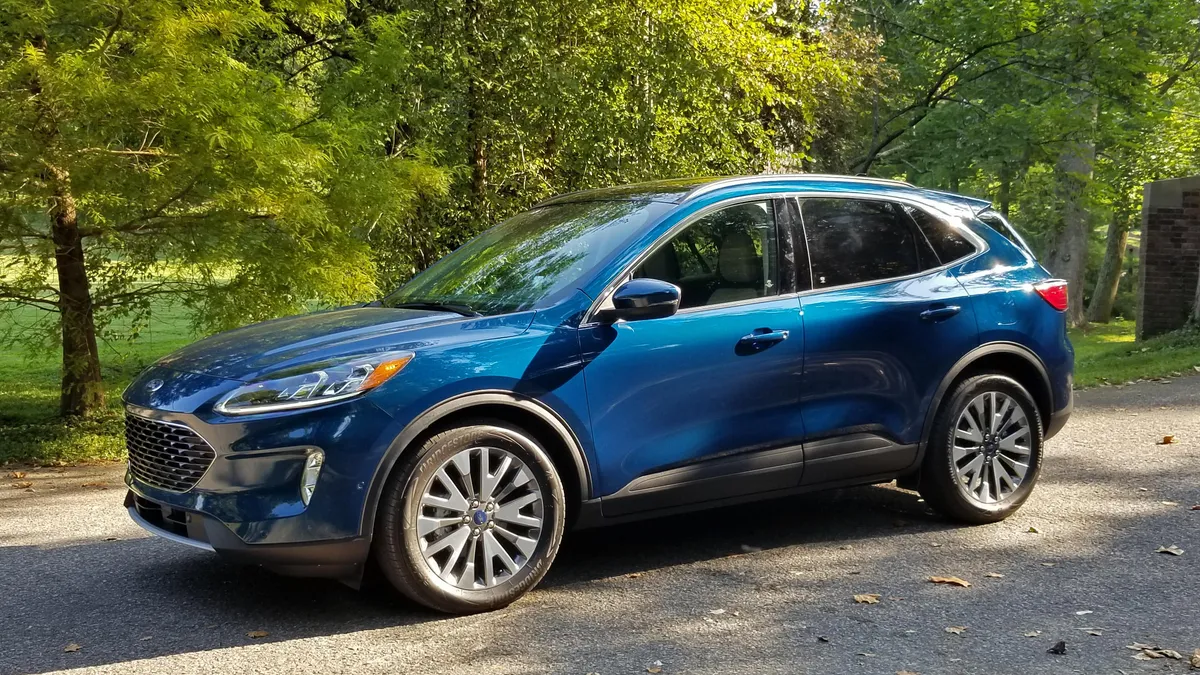
4. Ford Escape
The Ford Escape is a popular compact SUV that enjoys favorable insurance deductibles due to a blend of safety, repair cost, and driver profile factors. This vehicle offers a comprehensive set of safety features, including forward collision warning, automatic emergency braking, and lane-keeping assist.
Such technologies significantly reduce accident frequency, which insurers reward with lower deductibles. The Escape’s solid safety ratings from independent organizations reinforce insurer confidence in its risk profile.
Repairability is another key element that benefits the Escape in deductible considerations. Parts are readily available and relatively affordable, which keeps repair costs in check.
Unlike luxury SUVs or high-performance vehicles, the Escape’s components are not prohibitively expensive or complex, meaning insurance companies are less exposed to large repair bills after claims. Additionally, Ford’s extensive dealer and repair network facilitates efficient service, further reducing potential insurer costs.
Demographically, Escape drivers tend to be pragmatic and cautious, often families or professionals seeking reliable daily transportation. This driver base typically exhibits lower accident rates, which insurers use as an important risk indicator when determining deductibles.
Furthermore, the Escape has a lower incidence of theft compared to more expensive or sporty SUVs. Reduced theft risk lowers the likelihood of costly insurance claims related to stolen or vandalized vehicles, enabling smaller deductibles.
Finally, the Escape offers a solid balance between affordability, safety, and practicality, making it an attractive choice for drivers mindful of insurance costs. Its insurance deductible advantage reflects these combined factors, making it one of the most economical SUVs in terms of out-of-pocket expenses when claims occur.
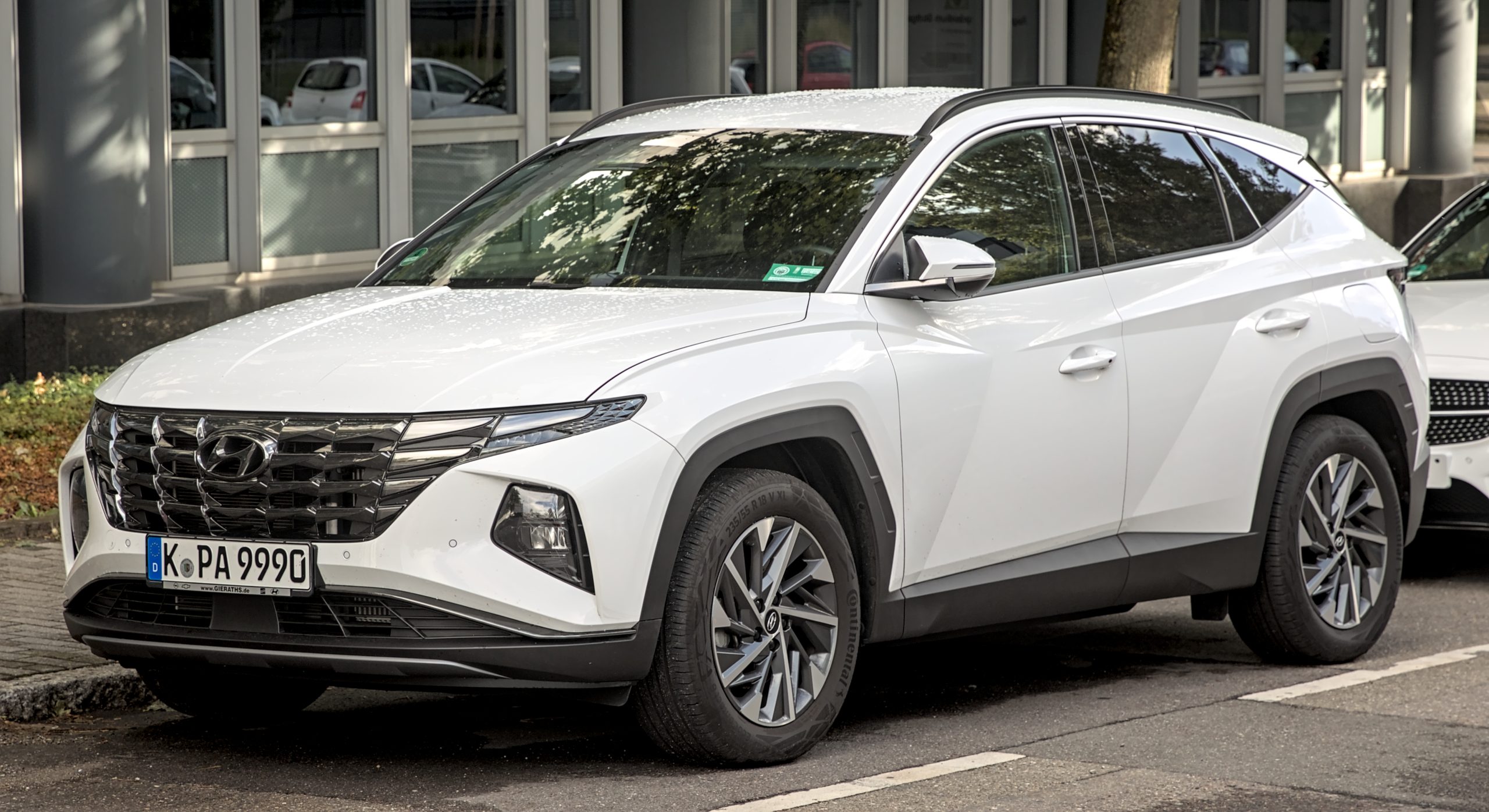
5. Hyundai Tucson
The Hyundai Tucson rounds out this list of cars with the smallest insurance deductibles, thanks to its comprehensive safety suite, reasonable repair costs, and broad appeal.
The Tucson comes equipped with numerous advanced safety features, including blind-spot monitoring, rear cross-traffic alert, and automatic emergency braking. These systems help prevent accidents or lessen their severity, directly influencing insurers to offer lower deductibles.
Repair costs for the Tucson are relatively moderate due to Hyundai’s widespread parts availability and efficient manufacturing process. The vehicle’s design avoids overly complex components or exotic materials that tend to drive repair expenses higher.
Insurers take this into account, knowing that claim repairs for the Tucson are predictable and generally affordable. This lowers their financial risk, which translates into smaller deductibles for policyholders.
The typical Tucson driver profile is another critical factor in its deductible status. Hyundai attracts a broad range of buyers, including safety-conscious families and value-driven individuals.
These demographics tend to have fewer and less costly insurance claims. Tucson’s relatively low theft rate, combined with standard anti-theft features, further reduces insurance risk. Insurance providers reward this combination with lower deductibles.
Lastly, Hyundai’s improving brand reputation for quality and reliability helps maintain the Tucson’s resale value and overall cost of ownership.
Vehicles with strong residual values tend to have smaller deductibles because insurers anticipate fewer total loss claims. All these factors combine to make the Hyundai Tucson a strong contender among vehicles with the smallest insurance deductibles.
5 Cars with the Largest Insurance Deductibles
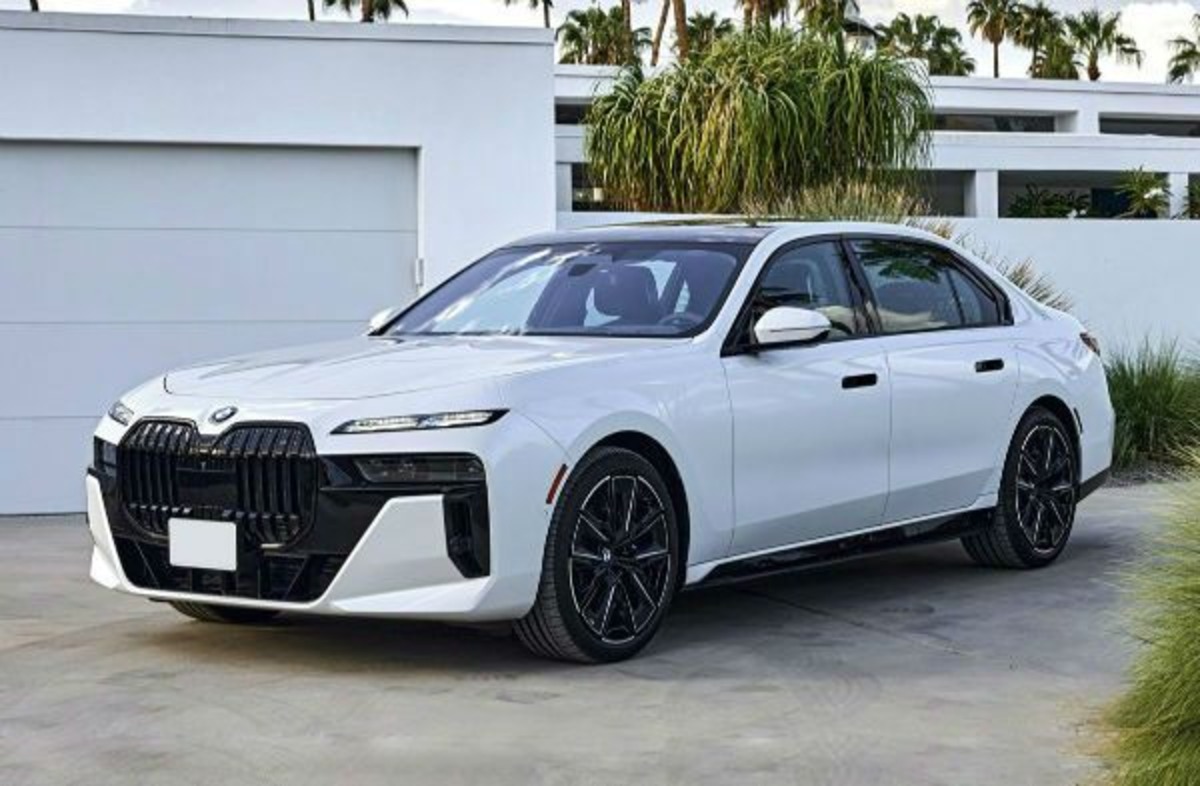
1. BMW 7 Series
The BMW 7 Series is a flagship luxury sedan known for its cutting-edge technology, high performance, and opulent features. However, these very characteristics contribute to it being one of the cars with the largest insurance deductibles. The 7 Series is packed with advanced electronics, intricate bodywork, and premium materials that drive repair costs through the roof.
When insurers assess deductibles, they factor in the average repair cost following an accident. Luxury vehicles like the 7 Series often require specialized repair facilities and parts that are both expensive and time-consuming to source. This inevitably inflates repair bills, pushing insurers to raise deductibles to mitigate their financial risk.
In addition to repair costs, the BMW 7 Series’ performance capabilities lead to a driver profile that typically results in higher-risk behavior. Owners of this model often value speed and driving dynamics, which statistically correlates with increased likelihood of accidents and speeding violations.
Insurance companies analyze this behavioral data and recognize that such cars tend to be involved in more frequent or severe claims. Consequently, insurers raise deductibles to manage the elevated risk posed by this demographic. The blend of high cost for repairs and higher claim frequency solidifies the 7 Series’ position among vehicles with large deductibles.
Another factor pushing deductibles higher is the BMW 7 Series’ susceptibility to theft and vandalism. Luxury cars are prime targets for thieves due to their high value and desirability in the black market for parts.
While BMW implements sophisticated anti-theft technology, the high demand for its components means insurers must be prepared for expensive claims when theft or vandalism occurs. This increased risk exposure results in higher deductibles. Additionally, the complexity of the car’s advanced security systems can add further repair costs, compounding insurer caution.
Finally, the 7 Series depreciates more slowly than many vehicles, which might seem like a positive factor. However, higher retained value can mean higher total loss thresholds for insurers, meaning when a vehicle is damaged beyond repair, the insurer’s payout is significant.
To offset the risk of large payouts for totaled cars, insurers increase deductibles. The combination of expensive repairs, driver risk profile, theft risk, and total loss exposure firmly places the BMW 7 Series among the top vehicles with the largest insurance deductibles.
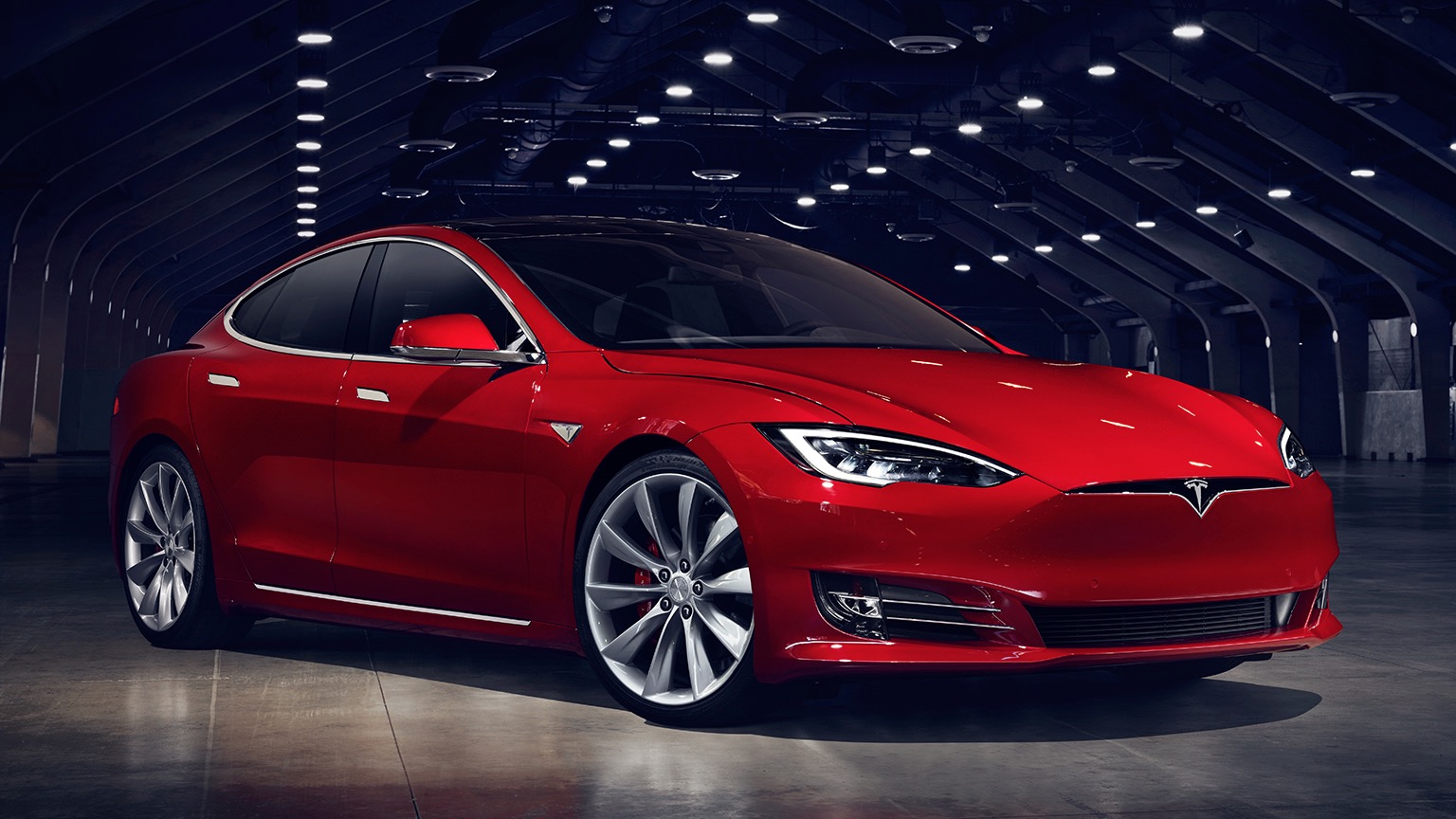
2. Tesla Model S
The Tesla Model S, a pioneering electric luxury sedan, has revolutionized the automotive industry with its blend of technology, performance, and zero emissions. However, Tesla owners often face some of the largest insurance deductibles, and there are several reasons why.
First and foremost, the Model S’s battery pack is one of the most expensive components in the car. Damage to the battery during an accident can result in repair or replacement costs that are astronomically high compared to conventional vehicles. Insurers, wary of this, increase deductibles to protect themselves from bearing these substantial costs.
Tesla’s construction materials and repair processes also contribute to the high deductible amounts. The Model S incorporates extensive use of aluminum and other lightweight materials, which require specialized repair techniques. Not all body shops are equipped or certified to repair Teslas, which limits repair options and drives up labor costs.
Additionally, Tesla’s proprietary technology, including its autopilot hardware and software, demands highly skilled technicians for maintenance and repairs, again increasing expenses insurers anticipate after a claim. This scarcity of repair facilities and specialized labor inflates insurance deductibles for Model S owners.
Driver behavior further impacts the Tesla Model S’s deductible size. The Model S appeals to tech-savvy, affluent individuals who may push the limits of the vehicle’s acceleration and autonomous features. While Tesla’s safety tech aims to prevent accidents, the vehicle’s performance profile can encourage riskier driving, leading to more claims or more severe accidents.
Insurance companies analyze these behavioral patterns and adjust deductibles upward to balance the risk. Additionally, while Tesla’s autopilot system has safety benefits, it is not infallible and can sometimes lead to complicated liability cases that increase insurer risk.
The Model S is also targeted for theft, particularly due to its advanced components and electric powertrain parts, which are in demand for resale. The risk of theft, coupled with the high cost of repairs and battery replacement, results in insurers imposing higher deductibles.
Furthermore, given the Model S’s premium status, its resale value remains high, increasing total loss claim amounts. To manage these factors, insurers often set higher deductibles to shield themselves financially, making the Tesla Model S one of the costliest vehicles to insure in terms of deductibles.
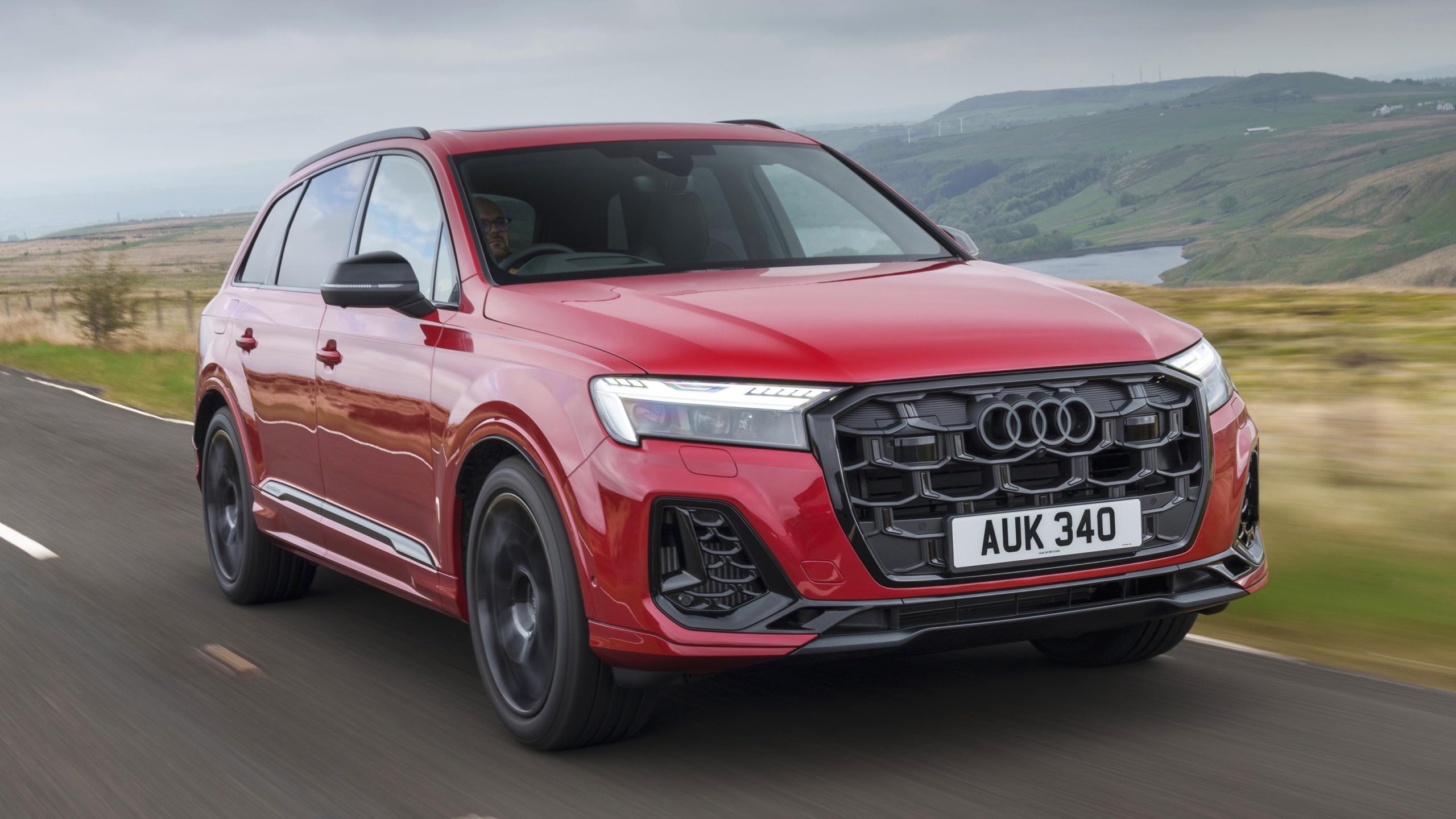
3. Audi Q7
The Audi Q7 is a luxury midsize SUV that combines performance, technology, and comfort. Despite its popularity, the Q7 is notorious for carrying some of the largest insurance deductibles, largely due to its repair costs and advanced technology. The Q7’s complex mechanical systems, including its all-wheel-drive system and adaptive suspension, require expensive parts and specialist repair services.
Damage to these components can lead to exorbitant repair bills, which insurers account for when calculating deductibles. The premium materials used throughout the vehicle, such as leather, wood trim, and high-tech infotainment systems, also contribute to high replacement costs.
The driver profile associated with the Audi Q7 further affects its deductible levels. Owners of this luxury SUV tend to be affluent individuals who may have higher exposure to risk-taking, whether through faster driving or more frequent use in urban areas with heavy traffic.
Insurance companies analyze these tendencies and adjust deductibles accordingly. Higher claim frequency or severity increases insurer risk, leading to increased out-of-pocket expenses for the policyholder when a claim occurs. The demographic data and driving habits linked to the Q7 push deductibles upwards.
The Audi Q7 also experiences a higher incidence of theft and vandalism, common with luxury SUVs. Its parts are valuable on the black market, and the vehicle’s visibility and status make it a target.
Insurance companies respond to this risk by increasing deductibles to mitigate the potential for expensive theft-related claims. Additionally, the cost of replacing advanced safety systems, sensors, and cameras following theft or collision is substantial, further driving up deductible amounts.
Lastly, the Q7’s residual value and likelihood of total loss claims impact deductible sizes. Like many luxury vehicles, the Q7 holds its value relatively well, meaning insurers face larger payouts if the vehicle is totaled.
To protect against these financial exposures, insurers increase deductibles. All these factors—high repair and parts costs, driver risk profiles, theft rates, and resale values—combine to give the Audi Q7 some of the highest insurance deductibles on the road.
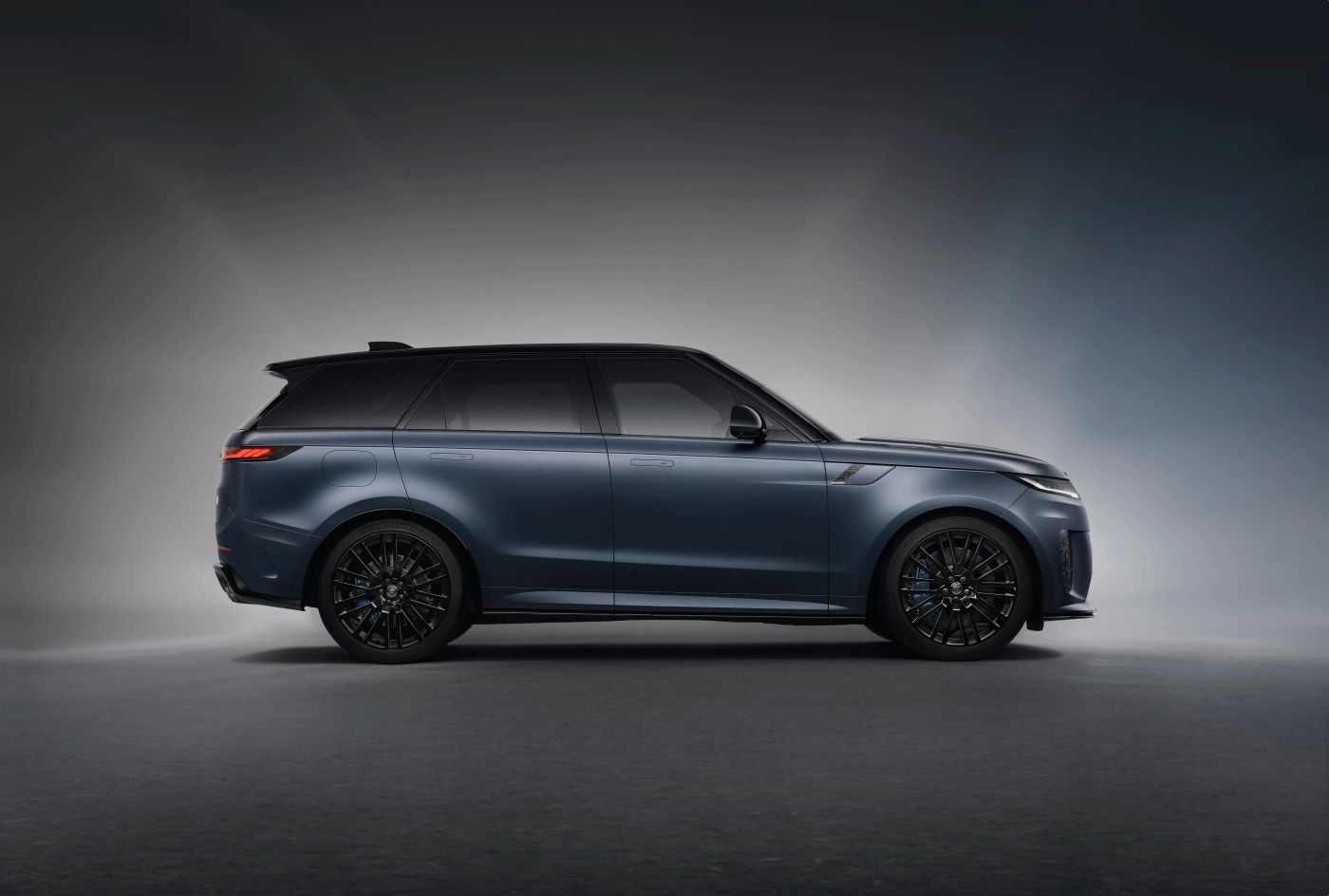
4. Range Rover Sport
The Range Rover Sport is a luxury SUV that combines off-road prowess with high-end comfort and technology. However, owning this vehicle means facing some of the largest insurance deductibles available, and the reasons are multifaceted.
The Range Rover Sport features sophisticated electronics, air suspension systems, and complex drivetrain components, all of which require expert repair and costly replacement parts. These advanced technologies and premium materials lead to significant repair bills after accidents, prompting insurers to increase deductibles to mitigate these expenses.
Driver behavior and demographic patterns play a significant role in the Range Rover Sport’s insurance profile. The vehicle appeals to affluent drivers who often push the limits of performance or use the vehicle in a variety of challenging environments, increasing the probability of accidents or claims.
Insurance companies take these behavioral trends seriously and raise deductibles as a financial safeguard. The Range Rover Sport’s combination of luxury and rugged capability tends to attract drivers with more aggressive driving styles, further elevating risk.
The SUV is also a prime target for theft and vandalism. Its status as a symbol of wealth makes it a frequent choice for thieves, and the value of parts on the black market is high.
Anti-theft technologies notwithstanding, insurers anticipate these risks and factor them into deductible calculations. Repairing or replacing stolen or vandalized components, especially electronics and luxury finishes, is costly, driving deductibles higher.
Lastly, the Range Rover Sport’s high resale value increases insurers’ total loss exposure. When a vehicle maintains significant value, insurance companies may have to pay out large sums if it is declared a total loss after an accident.
To offset these potential high payouts, insurers set larger deductibles. Combined, the high cost of repairs, elevated risk driver profile, theft risk, and retained value create a scenario where the Range Rover Sport commands some of the largest insurance deductibles in the market.
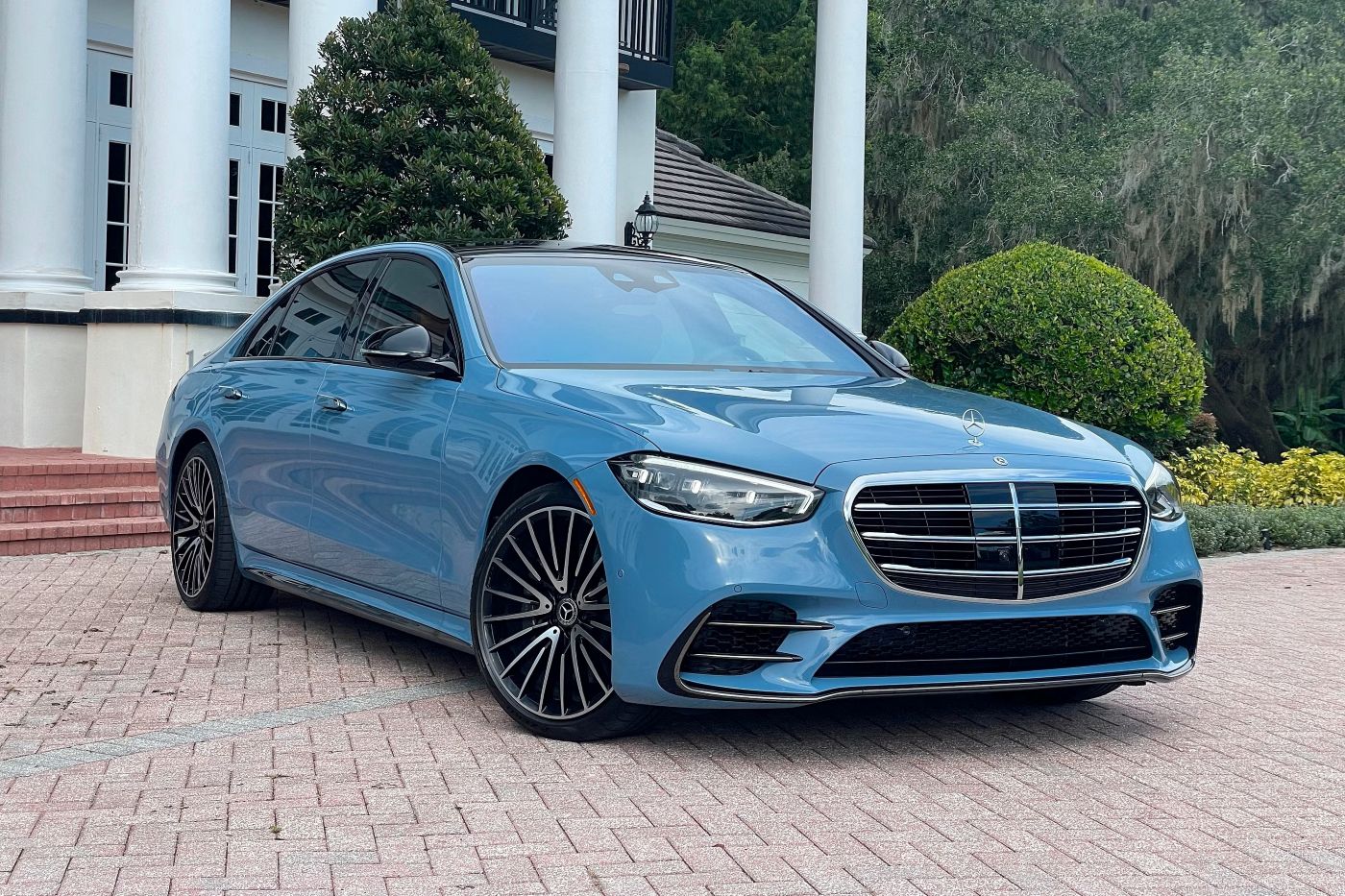
5. Mercedes-Benz S-Class
The Mercedes-Benz S-Class represents the pinnacle of luxury sedan engineering and technology, but this level of sophistication translates into some of the largest insurance deductibles.
The S-Class is equipped with a vast array of high-tech features, including advanced driver-assistance systems, complex electronic modules, and luxurious interiors made from premium materials.
Repairing or replacing these elements requires expert technicians and expensive parts, which insurance companies factor heavily into deductible calculations. The complexity and costliness of repairs on the S-Class necessitate higher deductibles to manage insurer risk.
The typical S-Class owner is an affluent individual who expects both performance and prestige. Unfortunately, this driver demographic is often associated with riskier behavior patterns such as higher speeds and urban driving, which increase the likelihood and severity of accidents.
Insurance companies, analyzing this data, respond by increasing deductibles to offset the risk of frequent or costly claims. The advanced features of the S-Class, while enhancing safety, also introduce complex liability and repair scenarios that increase insurer costs.
The S-Class is also subject to higher rates of theft and vandalism. The vehicle’s luxury status makes it a target, and the value of its parts on the secondary market is considerable.
Anti-theft devices can only mitigate so much risk, and insurers prepare for potential losses by imposing larger deductibles. Repairs involving electronic control units, sensors, and bespoke interior components add to the overall cost burden.
Finally, the S-Class maintains a high resale value, which influences deductible size by increasing total loss claim amounts. Insurance companies are cautious when insuring vehicles with high retained value because the financial risk is greater if the car is severely damaged or totaled.
To protect their financial interests, insurers increase deductibles for the Mercedes-Benz S-Class. This combination of high repair costs, risk-prone driver behavior, theft exposure, and high residual value firmly places the S-Class among the vehicles with the largest insurance deductibles.
Also Read: Top 10 EV Features That Come in Useful in Daily Commute
In the intricate world of automobile insurance, understanding the nuances of insurance deductibles is a critical yet often underestimated aspect of vehicle ownership.
As this article has explored in depth, the size of an insurance deductible does not simply hinge on arbitrary numbers but is instead a carefully calculated figure based on an array of factors, including vehicle repair costs, safety ratings, theft risk, and the typical behavior patterns of the vehicle’s drivers.
The differences in deductible amounts between cars are vast, reflecting the diversity of the automotive market and the varying degrees of risk insurers face.
On one end of the spectrum, vehicles like the Honda CR-V, Toyota Camry, Subaru Outback, Ford Escape, and Hyundai Tucson exemplify models with some of the smallest insurance deductibles.
These vehicles tend to share common traits: they are equipped with advanced but accessible safety technologies, have repair costs that are manageable due to widespread parts availability and simpler mechanical designs, and attract drivers who generally exhibit cautious and responsible driving habits.
These factors combine to reduce both the frequency and severity of insurance claims, allowing insurers to offer lower deductibles and thereby easing the financial burden on owners when accidents occur.
Conversely, the luxury and high-performance segment paints a starkly different picture. Cars such as the BMW 7 Series, Tesla Model S, Audi Q7, Range Rover Sport, and Mercedes-Benz S-Class carry some of the largest insurance deductibles on the market. The advanced technology, expensive materials, and complex repair requirements of these vehicles drastically increase repair costs.
Furthermore, the demographic profiles of their typical drivers, who may engage in riskier driving behaviors, combined with higher theft and vandalism rates, elevate insurer risk exposure. These factors force insurers to set higher deductibles to protect themselves financially from costly claims, which translates into greater out-of-pocket expenses for the policyholder after an incident.
Understanding these distinctions is invaluable for anyone navigating the car-buying process or managing vehicle insurance. While the allure of luxury, performance, or cutting-edge technology is undeniable, prospective buyers must weigh these desires against the practical implications of insurance costs, particularly deductibles.
Lower deductibles may mean higher premiums, but they provide more immediate financial relief after a claim, which can be critical in times of accident or damage. Higher deductibles might reduce monthly premiums, but can expose drivers to significant expenses that could strain personal finances.
Moreover, as automotive technology continues to evolve rapidly—with more vehicles integrating autonomous driving systems, advanced safety features, and electric powertrains—insurance underwriting is becoming increasingly complex.
Insurers are adapting their risk models to keep pace with these changes, which will continue to influence deductible sizes across different vehicle types. Buyers must remain informed and vigilant, recognizing that the relationship between vehicle features and insurance costs is dynamic and multifaceted.
This knowledge encourages more thoughtful decision-making, enabling consumers to balance their preferences with the realities of insurance economics. For many, prioritizing vehicles with lower deductibles might be a strategic move to manage overall costs effectively. For others, especially those who value prestige and cutting-edge innovation, understanding the likelihood of higher deductibles prepares them financially and avoids unexpected shocks.
Ultimately, insurance deductibles are a crucial piece of the car ownership puzzle. They embody the intersection of vehicle design, driver behavior, and insurer risk management.
Being informed about which cars carry the smallest or largest deductibles allows buyers to approach their choices with greater confidence and foresight. It highlights that while vehicle aesthetics, performance, and luxury are important, the financial safety net provided by insurance must never be overlooked.
In conclusion, whether you find yourself drawn to the reliability and economy of models like the Toyota Camry or the sophisticated luxury of a Mercedes-Benz S-Class, understanding insurance deductibles equips you with a powerful tool to safeguard your investment.
By carefully considering the implications of deductible sizes, you can make informed decisions that align with both your lifestyle and your financial goals, ensuring peace of mind every time you get behind the wheel.

